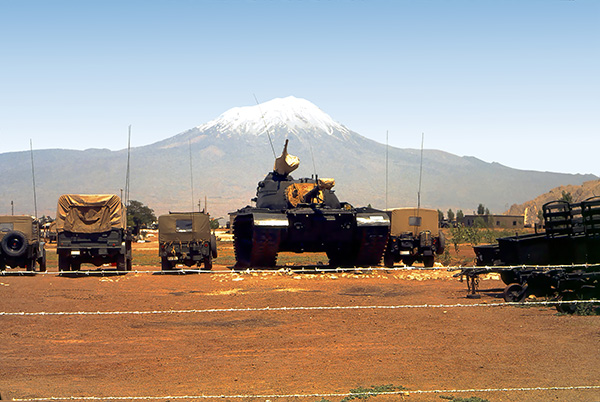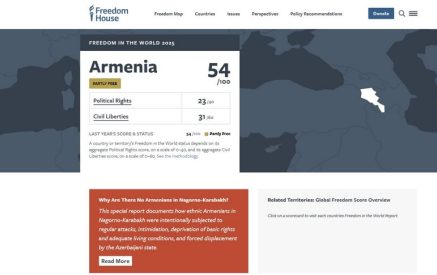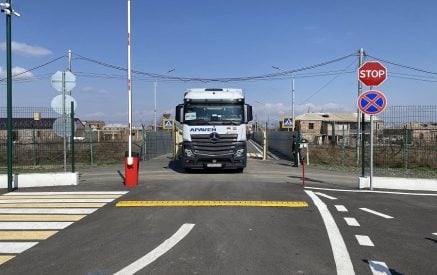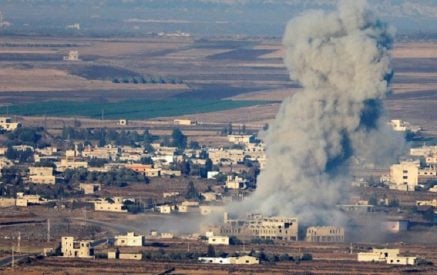The Armenian Weekly. The Armenian government is working to assist ethnic Armenians in danger of being caught in the wake of the Turkish invasion of northeastern Syria, which is now entering its first week. Authorities in Yerevan were quick to formally condemn the Turkish assault, which has been dubbed “Operation Peace Spring” by the Turkish military.
During a special emergency session of Parliament, Armenian Security Council Secretary Armen Grigorian briefed the government on the rapidly evolving tactical situation on the ground in the region and assessed the status of the small local Armenian community.
Turkey has long considered the Kurdish-dominated Autonomous Administration of North and East Syria, or Rojava, which controls parts of Syria between the Turkish border and the Euphrates River, a major threat to its national security. Ankara accuses the YPG, the Kurdish militia operating in the region, of being an arm of the Turkish-based Marxist guerrilla group—the PKK—which they, along with several other nations, have designated a terrorist group.
Turkish President Recep Tayyip Erdoğan has stated that Operation Peace Spring is meant to create a buffer zone along northeastern Syria where some of the three million Syrian refugees currently in Turkey could be resettled. Critics, particularly the Kurds and Christian minorities of Rojava, accuse the Turks of orchestrating an ethnic cleansing operation.
Read also
Efforts to assist approximately 5,000 Armenians living in the region have been hampered by a lack of accurate intelligence caused by the sudden expansion of the Islamic State (IS) into the central and eastern parts of the country back in 2014, which severed communications with the consulate in Aleppo. The area has since been cleared of IS through a string of successful operations by Kurdish-led militias with US assistance. Yet President Trump’s sudden and controversial decision to pull out US troops has emboldened Turkey into engaging in military adventurism across northeastern Syria.

Syrian Democratic Force commando cadets clear a room during military operations in urban terrain training in Syria, Aug. 3, 2019. The SDF have made steady progress, and have adapted to Daesh tactics to continue to pressure them into smaller spaces. (U.S. Army photo by Spc. Alec Dionne)
However, Deputy Minister of Defense Gabriel Balayan told the Armenian Weekly that the Armenian military is closely monitoring Turkish activity in the region and has managed to reestablish contact with members of the Armenian community in Qamishli. Most of those are the descendants of survivors of the Armenian Genocide who settled in the area over a century ago. For the Armenians still living within eyesight of the Turkish border, the appearance of Turkish troops brings back unpleasant memories of past atrocities.
Some of those atrocities are more recent. The sacking of the Armenian coastal town of Kessab by Turkish-backed Islamist fighters five years ago led many in Armenia and around the world to draw comparisons with the 1915 Armenian Genocide.
The Turkish assault has not been going so smoothly so far. Yeghia Tashjian, a political analyst based in Beirut told the Armenian Weekly that Turkish columns made quick gains over the first three days of their assault, swiftly capturing the strategic towns of Ras al-Ayn and Tal Abyad. However, by the fourth day, a counterattack by Kurdish-led forces managed to halt the Turkish columns, and reportedly recaptured the town of Tal Abyad, while Ras al-Ayn continues to be the scene of fierce street fighting.
While the northeastern town of Qamishli literally straddles the Turkish border, it has so far been spared the brunt of the assault. Despite clearly appearing within the planned security cordon on Turkish maps, the town and its strategic airport lie within a small enclave under direct control by the Syrian central government in Damascus.
While Turkey’s reluctance to engage the Syrian government directly so far has provided the Armenians of Qamishli with some respite, this false sense of security has caused a delay in requests by local Armenians for assistance from the Armenian government. Residents of Qamishli run the risk of encirclement as the main Turkish armored column pushes towards Al Hasaka in the south.
Still, Tashjian says, the Armenian embassy in Damascus already managed to rescue some 16 families from under the tracks of Turkish tanks in Ras al-Ayn, evacuating them to safer parts of the country. Armenian authorities are still working to obtain credible information on the situation for Armenian families in Al Hasaka.
In Yerevan, High Commissioner for Diaspora Affairs Zareh Sinanyan has vowed to commit every available resource to assist ethnic Armenians in northeastern Syria. “Armenia and its people stand together with their compatriots [in Rojava] and will do the utmost to ensure their security,” he announced on October 10.
Around 80 Armenian military personnel have been deployed in Syria since February of this year. The contingent consists of an ordnance disposal unit and medics. According to the Armenian Ministry of Defense, the team is in a strictly non-combat role and is primarily tasked with assisting the Armenian community in Aleppo. However, at least one sapper was seriously injured after walking on a mine.
Additionally, reports have surfaced of an ethnic-Armenian unit, the Martyr Nubar Ozanyan Brigade, taking part in engagements with Turkish forces on the Kurdish side. The unit is named after Nubar Ozanyan, the Turkish-born Armenian radical communist militant who was killed in action during the YPJ’s successful assault on the Islamic State’s capital of Raqqa in 2017. Ozanyan reportedly also briefly took part in the Karabakh War in 1991. The brigade which bears his name was officially raised on April 24 of this year, to coincide with the anniversary of the Armenian Genocide.
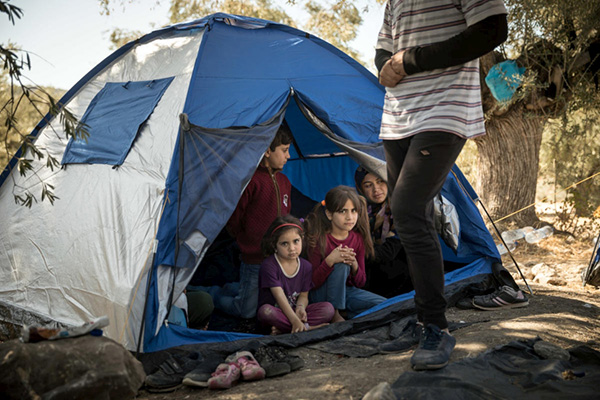
A Syrian family from Idlib recently arrived on the Greek island of Lesvos and living in an olive grove next to Moria reception centre. (Photo: UNHCR/Gordon Welters)
While the Armenian government has announced its readiness to take in Armenian refugees from Rojava, it is yet unclear how many have taken them up on the offer. Armenian repatriates from the region have proven to successfully integrate in the past. For the 29 Armenian families who resettled from the Qamishli area to Artsakh’s Kashatagh District in 2012, for instance, acclamation to a rural lifestyle and experience in agriculture was an asset for them as well as for their adopted communities. Thanks to them, Artsakh will soon be exporting olive oil.
Main photo: Hervé Platteaux/Flickr, January 2015-Turkish M48 Patton Tank in front of Mount Ararat in Turkey




















































